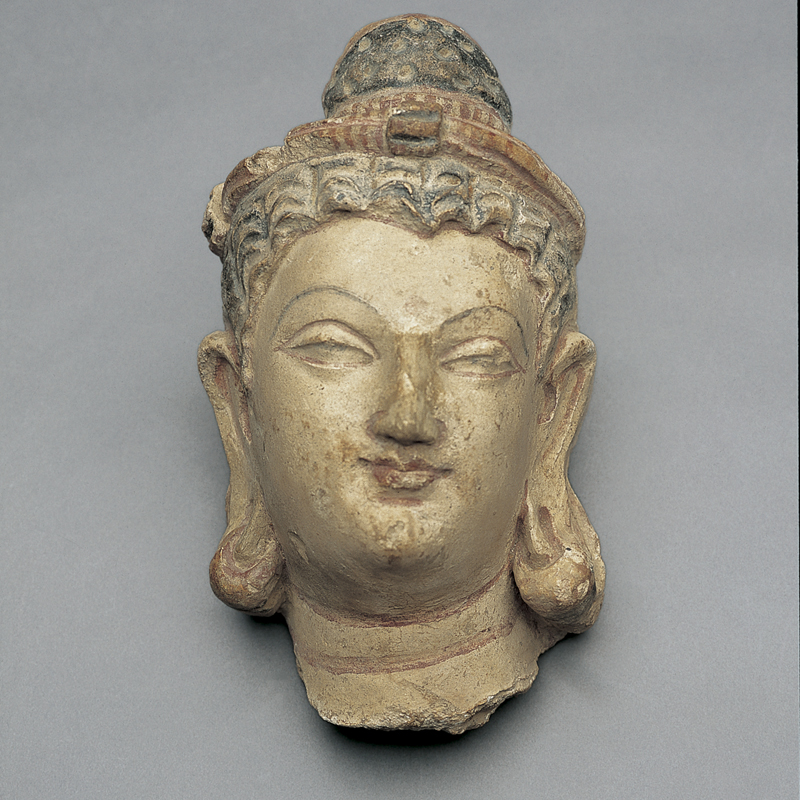Head of Bodhisattva
Description
With the invasion of Alexander in 326 BCE, the Gandhara region got peopled by the Greeks. In the Parthians and other settlers were converted to the prevalent Buddhist way of life. The art form we call Gandhara resulted. It flourished from the 2nd to 4th century CE.
The image of the Bodhisattva in Buddhism was introduced for the first time in Gandhara art. As you can see in this stucco, the head is fashioned after the Graeco-Roman ideals of anatomical perfection.
This Bodhisattva head has a princely charm. The features are well-defined: beautiful eyelids and deep eye sockets under elegantly curved eyebrows, an aquiline nose, a broad forehead, thin lips, and a tuft on his head denoting wisdom. The light beige earth colour, the texture of the material, and the naturalistic modelling of the face make it almost human.
Like stone, stucco was a popular medium in Gandhara from at least the 1st century though along with clay it became more popular in the 4th–5th century.
Karl and Meherbai Khandalavala Collection
Collection
Buddhist Art
Object Type
Sculpture
Material
Stucco
Schools/Culture/Period
Gandharan
Technique
--
Date
4th century CE
Location
Hudda, Gandhara, Pakistan
Dimension
Ht. 21.5 cm
